
Son Julia Country House Hotel
If you're looking for a perfect hideaway from your usual routine, then this lovely 15th century Mallorcan manor is the place to escape to.

© rockandride-mallorca.com
Discover the top Mallorca mountain-biking
Mallorca offers excellent mountain biking for those wishing to seek out the trails. The added joy of mountain biking in Mallorca is discovering secluded beaches, hilltops with stunning views, wildlife in its natural environment and colourful fields of flowers in the spring.
Terrain on the island is nearly always rocky with little soil cover, sometimes sandy it gives the trails a technical feel with many obstacles generally suited to the more experienced biker. The trails have been likened to areas of Colorado and Arizona in the USA. The mountains are composed of limestone and when the limestone is wet, conditions can be very challenging. It is always better to wait until the rock is dry, never long on the island. The east coast is slightly more sandy and a good wet weather option.
And if you don't have all the gear, you can rent it when you get here either through your accommodation provider or through local sports shops and mountain bike guides.

The mountain biking routes in Mallorca are to be found all over the island, and because of its compact size and excellent roads you can get to most of the island from where you're staying with little problem. As a general rule the west coast is very mountainous with bigger climbs and bigger descents, whereas the east cost is a little flatter.
Areas that are popular include Sa Comuna near Bunvola and the Soller Valley in the west, Cala Millor on the east coast, Pollenca/Alcudia in the north and Peguera in the south west. Na Burguesa near Palma has plenty of forestry roads, which is great for the less advanced bikers, and Sa Comuna near Bunyola is also a good place to explore with many 4x4 roads in lovely forest comprising Mediterranean Holm Oak and Pine. You can find mountain biking guidebooks and info on the main biking areas in the local hire shops, some of which run guided tours.
Access for mountain bikers in Mallorca is a contentious issue, and if you are asked to leave an area for whatever reason, please do so without antagonising the land owner. There is little or no demarcation between walkers and mountain bikers as regards the use of footpaths, but If you meet walkers slow down and be courteous, a friendly “Ola” goes a long way. Walkers have the right of way over bikes.

Whether to go full-suspension or hardtail is a question which creates a lot of healthy debate amongst the mountain biking community. Whether you're renting or buying you should first decide which type you're looking for, and there are numerous makes and models of both types available.
So what's the difference?
Full-suspension: Both front and rear suspension that is effective at absorbing lumps, bumps and jumps, thus providing better performance and a smoother ride.
Pros:
Cons:
Hardtail: A bike with no rear suspension. Suspension forks may be at the front of the bike but its back post is rigid.
Pros:
Cons:
Renting
If you plan on renting equipment then there are plenty of Mallorca mountain bike hire shops hiring out both full-suspension and hardtail mountain bikes. On average you can pay anywhere between €16-€80 for a day's hire, depending on whether you select a bike with or without suspension. It's also possible to hire mountain bikes for children from around €15 a day.
Buying
There are numerous makes and models of both types available to the potential buyer so when deciding on which type of bike is best, it's important to consider the following:
Bringing your own bike
If you bring your own bike then there's no point filling your excess baggage with spare bike parts (unless your bike requires specific specialist component parts). Mallorca has some excellent biking shops that sell plenty of spare parts and components for your bike. However, remember the spares list does not extend to some obscure pivot in your one off special downhill rig. We're talking rear mechs, pedals, cranks, chains, cassettes, brakes, brake pads, cables etc from the more popular manufacturers. The exception to this rule is the rear gear hanger; bring one with you for your bike, especially if it’s of the super funky alternative/rare type. The bike shops do not carry this part for all the different bike manufacturers and models, and it's probably the most frequently damaged part in the event of a crash. Even a relatively innocuous fall can damage this part and although they can often be bent back into shape, it would be a shame to ruin your holiday if this were not the case.
Before you travel
It is highly advisable to ensure your own bike is in tip top condition before lugging it all the way over to France. A day riding in the Alps equates to many rides in the UK, and the wear and tear on your bike reflects this. If you start the week with your bike in a poor to average state of repair it will let you down at some point and spoil the day, if not the week's enjoyment. If you're not a competent bike mechanic then have your local bike shop service your pride and joy. It's also money well spent to upgrade your tyres if they are of the lighter weight cross-country variety, and purchase some free ride tyres with a 2.3 section to smooth your way and avoid the punctures. There is every chance a set of brake pads will disappear in a week, so bring a spare pair and carry them with you on the trails to avoid that metal on metal effect! If you run out of time before you come away, Mallorca local bike shops will be able to carry out a service for you.

When out and about on the trails, here's a checklist of what you will need:

If you're looking for a perfect hideaway from your usual routine, then this lovely 15th century Mallorcan manor is the place to escape to.
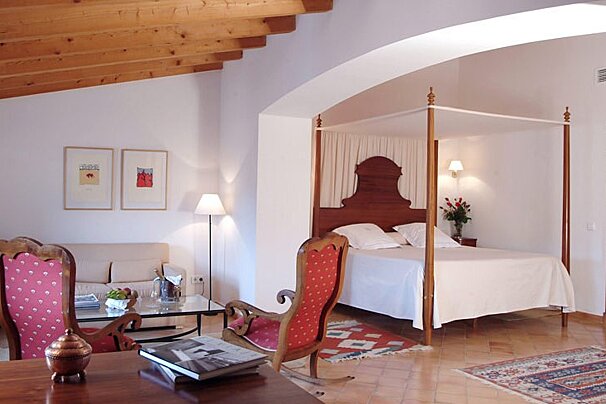
This hotel lies in the middle of a private estate of 150 hectares with large plantations of apple and cherry trees, cultivated fields and mountains. It is an ideal base for hiking, riding mountain-bikes or simply strolling around to watch the farmers pick cherries and apples.
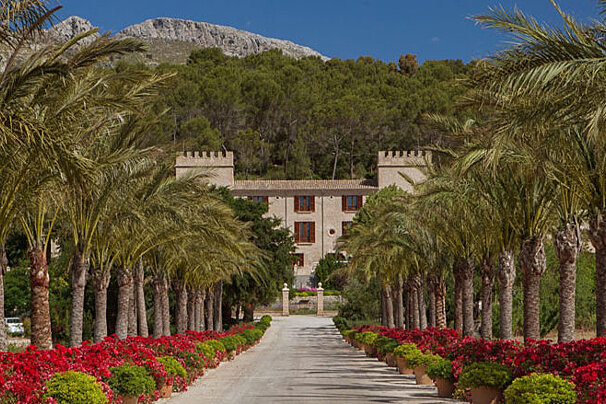
First mentioned in 1450, this site consists of various properties united in the 18th century to form a 132-acres estate. The current buildings, reformed in the 19th century, have been lovingly restored in 2013 to open as a luxury hotel that includes beautiful gardens.
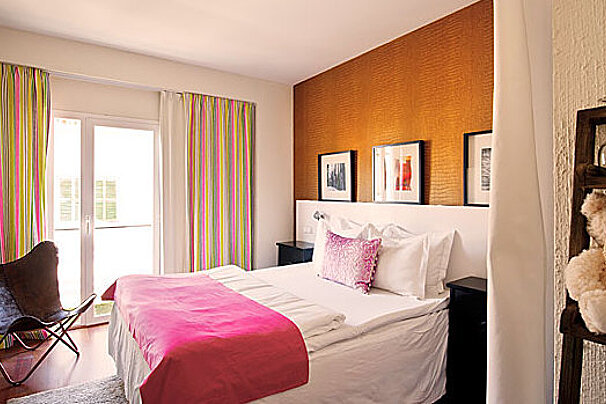
Find peace and tranquillity in this chic, modern hotel just off the harbour promenade, with a bustling nightlife. With a friendly atmosphere that invites you to be happy.
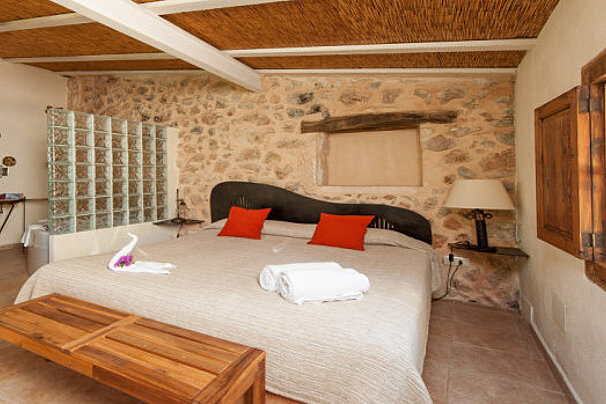
Situated in a magnificent country estate of 150.000 m² located in the North of Mallorca, the building dates from the 16th century.
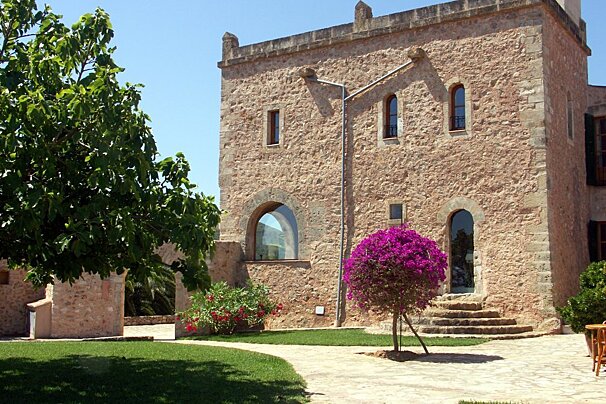
This hotel is set in charming 16th century buildings and grounds which were lovingly restored and added to by the family who own and operate it.

A review of the main airlines' Terms and Conditions, in relation to sports equipment/baggage, indicates that it's highly likely that you will be subject to a charge for taking your bike on board. Easyjet, Aer Lingus, Ryanair, and KLM all charge an additional one-way fee to carry your bike. At time of writing British Airways (and their partner Swiss Air) does not charge extra fees for taking bikes on their planes, providing they fit within the free baggage allowance and are packed in a hard shelled container, but we recommend you always check when booking.
Make sure that the combined weight of your luggage does not exceed your allowance. Although you may have paid an excess for your bike, its weight may be added to the weight of your hold luggage and there can be a penalty for any kg over the allowance.

There are a few options available in transporting your bike. The rules and regulations of flying with a bike do vary massively across the carriers, so it's crucial that you follow their guidelines, and recheck them every time you fly as they can change quite frequently. On their websites you should find a sporting equipment or special baggage page where you'll find their policies. Generally speaking most airlines will require you to bag or box your bike, and contact them in advance to confirm/reserve your bike's spot on the flight.
Hard bike boxes tend to cost in the region of £300+ and like a hard case suitcase it will minimise the risk of damage occurring to your bike, but they are heavier. A soft bike bag is the cheaper option, costing around £100, but its protection is not as reliable as the hard box.
Most airlines stipulate the following:
If you're transporting your bike, you should also check out your travel insurance arrangements. A lot of travel insurance companies will not cover your bike without an additional excess payment, and a lot of airlines will not be held responsible for any damage sustained whilst the bike is in their care. Check out your household insurance policy to see whether it can be covered as 'contents away from home'. There may be a slight surcharge for this option, but it's potentially better than having to fork out for a new bit of kit, or a brand new bike.
Bike packing options:
Top Tips:

This is an industry that has seen incredible interest and growth, post-pandemic, largely due to rising technological advances and rapidly charging batteries, and it being a cheaper alternative to mainstream transportation. People are also more aware of the health benefits, and e-bikes offer access to getting out and about in a less strenuous way. Plus, they are seen as the eco-conscious alternative to motor vehicles, and with policymakers developing cycling infrastructures across towns and cities the world over, bike use has rocketed generally. In fact over 25% of money spent on mountain bikes in 2020 was on e-bikes. Specialized - one of the big three - was one of the first to introduce e-bikes to their mountain bike line-up, realising that the learning curve and fitness curve for mountain biking was steep and harsh. If riders had an eMTB they were more likely to enjoy the experience and then more likely to want to ride again. Now almost every bike brand has several eMTBs on offer with their ranges steadily growing. Also eMTBs now have their own XC World Cup category, meaning this sport is only going to keep growing.
The industry does suffer from supply issues, and since Covid supply chains from Asia have become complicated, transit times have doubled and container costs more than quadrupled. So when you find the eMTB for you, be aware you may have to wait quite a while for it.
What is an eMTB?
A mountain bike with an integrated motor that assists the rider when pedalling. There isn't a throttle, so if you don't pedal there is no support, and they only provide support up to a certain speed limit: the speed limit in Europe is 25km/h and 32km/h in North America. Whether they are hardtail or full-suspension, there are three distinct categories: Light, All-round, and Power. They come with all the things a traditional mountain bike has, but they are heavier and have distinguishing features such as an electric motor, a battery pack, and a handlebar-mounted computer that controls it all. The assist modes consist of: off, low (barely helps), medium, eco, and a battery-draining sport/high mode.
There are some things to consider when buying an eMTB, here are a few:
Key terms:
Fat tyre eMTBs
You'll see these around the trails from time to time, and simply put they are an eBike with tyres of four inches plus in width. Designed primarily to ride over snow, the heavy-duty tyres gives a greater ability to travel over more surfaces than bikes with a normal tyre width, such as snow, dirt, sand, wet stone, loose ground like leaves, twigs and rocks, and pavements or parks. They improve balance and stability on any type of terrain, and are therefore perfect for those who want more versatility and comfort, as comfort is definitely their greatest advantage. Rising in popularity, they can be harder to handle on the trails as their braking isn't as precise and performance isn't as good as with a bike on regular mountain bike tyres. Also worth remembering is that by having fat tyres, the frame, rim and axles are bigger and heavier, which isn't ideal for everyone.
Sharing the same trails
There has been some controversy in some areas around eBikes sharing the same trails as mountain bikers, hikers, horse riders etc., and in some countries and states they are banned from non-motorised mountain bike trails.
The majority of rental shops in your resort will have e-bikes available for hire should you wish to try this fast-emerging sport for yourself... just be warned, it's addictive.
For information on individual itineraries and bike parks, see our mountain biking routes, and try one of Mallorca's Adventure Companies if you'd like a guide.

Mountain biking in Spain and in particular, it would seem, in Mallorca is a very popular pastime. The terrain of mountain range, olive groves and rugged countryside make it perfectly suited to the sport.

This ride takes place in the beautiful Llevant National Park, north of Arta. The ride is of medium difficulty and will require some previous mountain bike fitness and a good quality bike with suspension. At the present time mountain biking is permitted within the park, please keep to designated trails. Walkers have right of way over bikers.
Find out all about what is happening in Mallorca and how to make the most of your time here. The latest news, reviews of fun activities, fabulous beaches, current events and the trendiest restaurants, as well as interviews with leading locals, insider's guides and our top choices for things to do, see, and experience on the island.
See allLatest News & ReviewsThe island hosts all sorts of events, including agricultural fairs in the spring and autumn, live music and DJs in the summer, religious fiestas and international sporting events. Some of the most popular are the Mallorca 312 cycling race in April, the Copa del Rey sailing regatta in July and the Moors vs Christians mock battle in September.
See allUpcoming Events